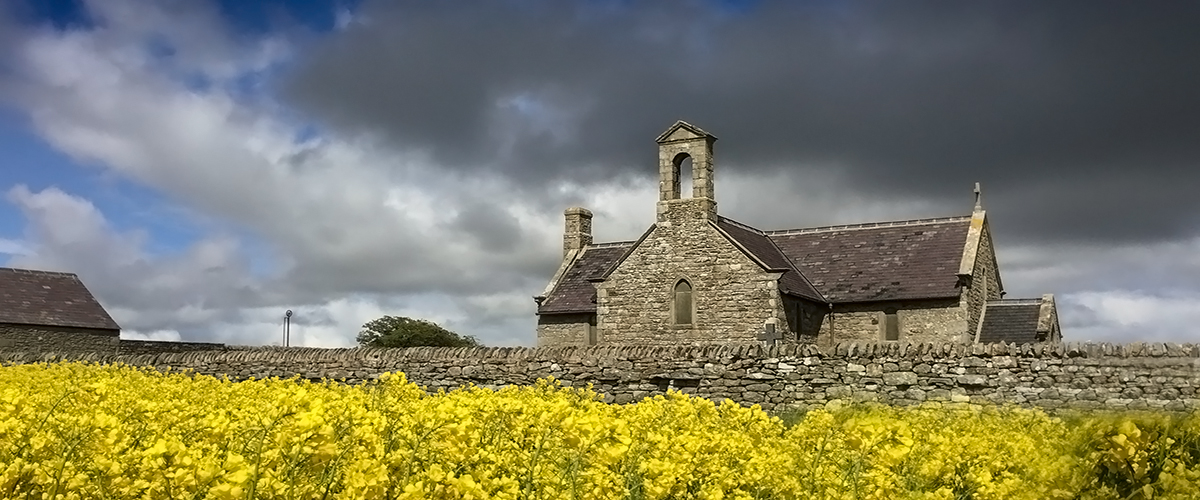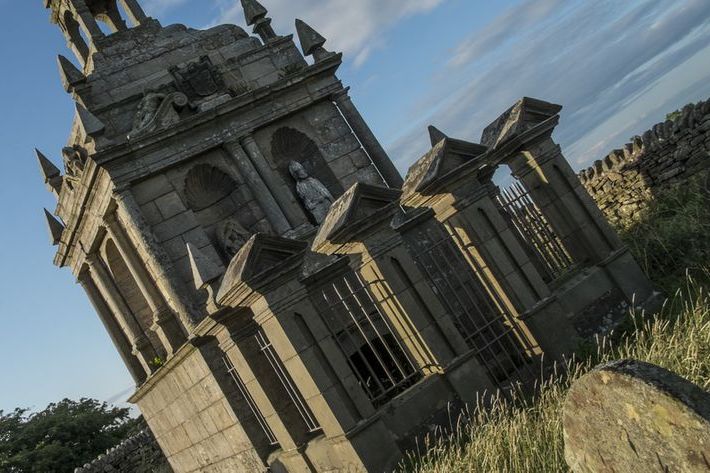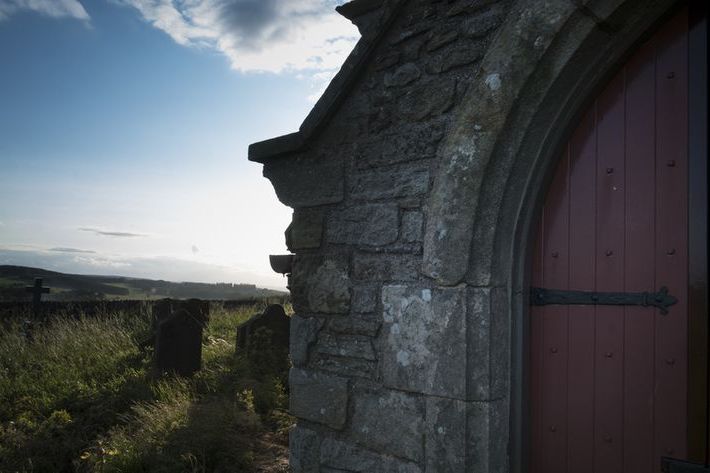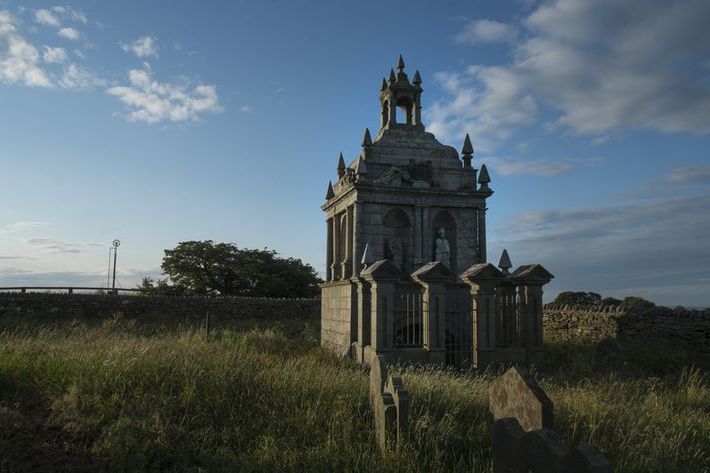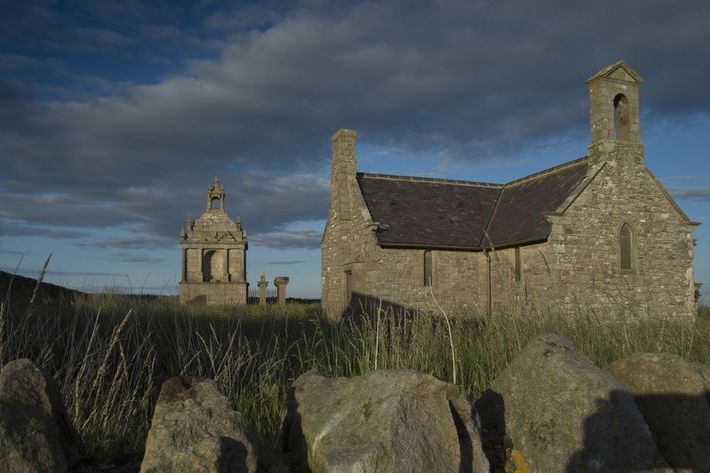St Andrew's Church, Shotley, Northumberland
- Overview
- Map
- What's nearby
A church high on a hilltop
St Andrew's stands isolated upon Greymare Hill, 293 metres above sea level, with stunning views in every direction. In 1165, the abbey of Blanchland was endowed by Walter de Bolbec with the church of St Andrew's, Bywell and its three chapels of Shotley, Styford and Apperley. Of Shotley's medieval chapel, there remains a single bell capital, now preserved off-site.
During the 1680s church wardens bemoaned their lack of the most basic of facilities and the state of disrepair they found their church in. By 1682 they describe what must have been a sorry sight "we want a Bible, a register booke, a bier, and a black cloth; our churchyard walls are much out of repaire; the house belonging to our parson was burnt down in the late incumbent's days, and as yet unrebuilt." By the mid-late 18th century saw the church become the center of local drama and conflict as Humphry Hopper clashed with local landowner and farmer Dr. Christopher Hunter in his efforts to repair and rebuild the church. In 1769, a simple cruciform church was erected with a central arched roof, but by 1836 it was partly collapsed owing to pit workings. It was restored in 1892 for use as a chapel of ease.
In contrast to the simplicity of the church, the Grade I listed Hopper mausoleum is a grand, elaborate structure unlike any other in the country. It was erected by Humphrey Hopper of Black Hedley in the year 1752 for his beloved wife, Jane.
The upper part of the mausoleum is embellished with obelisks, scrollwork, shields and statues standing in shell-headed niches. Of the two niched mitred figures on the south face, one, holding a scroll and book, is thought to commemorate the martyred Bishop Hooper.
By the mid-20th century, the mausoleum was in a state of partial collapse owing to pit workings, but after being taken into the care of The Churches Conservation Trust in 1973, it has been repaired and its piers and railings re-instated.
"in a very littell time we will have the Church about our Ears with out help befor Mayday next I fear." Words once spoken by Humphrey Hopper to the Trustees of Lord Crew as he petitioned them for the princely sum of £20 to save St Andrew’s. Said around 1740’s I’m sure he never imagined there’d still be a St Andrew’s on the same site some 280 years later.
Your support and generosity is what helps us keep the doors to these special places open. We could not do it without you.If you would like to donate to the upkeep and maintenance of St Andrew’s please text SHO to 70970 to donate £5 or to 70191 to give £10 every donation really does make a difference to these beautiful churches.
Thank You
To find out more about St Andrew's and the Friends of St Andrew's please visit https://www.standrewsshotley.co.uk/
-
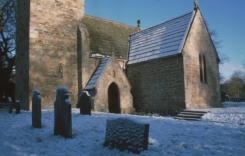
St Andrew's Church, Bywell, Northumberland
3.79 miles
The church of an ancient market town
-
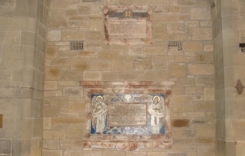
St Stephen's Church, Low Elswick, Tyne & Wear
12.60 miles
A soaring tower and spire gracing the skyline of Newcastle
-
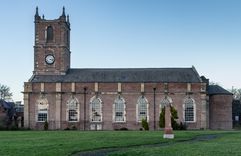
Holy Trinity Church, Sunderland, Tyne & Wear
22.38 miles
A bright and beautiful city church
-
Access information
There is no vehicle access to the church. A small wooden bridge crosses a shallow dyke leading to the narrow path through a sometimes ploughed or planted field. The path rises up the hill which is steep and can be muddy in places. There is a narrow gate into the churchyard and no made path to the porch. There are several steps up into the porch.
Disabled visitors will almost certainly need assistance negotiating the path up the hill to the church from the road and accessing the church through the porch. There is no allocated parking at or near the church.
-
Facilities & Hire
Due to the historic nature of our buildings, only a very small number have heating, running water or toilet facilities. The lighting is usually operated via a 'push button' timer or a motion sensor.
-
Directions
8 miles south east of Corbridge; travelling south from Corbridge on A68 Kiln Pit Hill is signposted on the left; after 800 yards the church can be seen to the right; a footpath leads up the hill
-
Transport
Nearest railway station: Riding Mill (5 miles).
-
History & Further Information
Enjoy a spell of calm reflection with our Mindful Moments: https://izi.travel/en/browse/fbc0691f-49e2-4f12-b965-38be2d0c4650
-
Community information
Useful local links:
- Visit Northumberland tourism website: www.visitnorthumberland.com
- Northumberland National Park: www.northumberlandnationalpark.org.uk
- Northumberland & Durham Family History Society: www.ndfhs.org.uk
- List of societies at Association of Northumberland Local History Societies: www.anlhs.org.uk
- Northumbria Historic Churches Trust: www.northumbriahct.org.uk
- List of churches in Northumberland: www.achurchnearyou.com
- Diocese of Newcastle: www.newcastle.anglican.org

